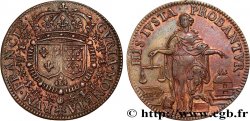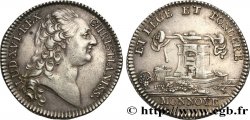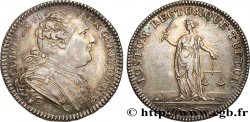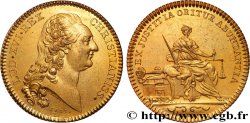Лицевая сторона
Аверс: легенда: CVRIA. MONETARVM. FRANCIAE.
Аверс: описание: Écus de France et de Navarre couronnés et entourés du double collier.
Аверс: перевод: CHAMBRE DES MONNAIES DE FRANCE.
Обратная сторона
Реверс: легенда: REGNABIS. TV. QVOQVE. VOTIS. 1615..
Реверс: Описание: Trois coeurs sous une couronne.
Реверс: перевод: GARDIENNE STABLE DU ROYAUME ; à l'exergue: "1713"..
Историческая справка
COUR DES MONNAIES DE PARIS
(1552-1791)
In the Middle Ages, the Chamber of coins, located in the Palace, in the same premises as the Chamber of Accounts, was responsible for monitoring mints.. In 1522, Francis I gave it the powers of a real court to judge cases relating to counterfeit coin.. In 1552, Henry II erected this Chamber into a sovereign court, better known as the Cour des coins de Paris. The Court of coins of Paris had, in addition to its judicial powers, a political function (remonstrances, drafting of certain edicts. . . ) and control over weights and measures (it kept in particular the so-called "Charlemagne" pile). From 1704 to 1771 it gave up part of its jurisdiction in favor of the Cour des coins de Lyon. The Paris coin Court was abolished in 1791, during the Revolution. The Provost General of coins was a company responsible for policing coins and enforcing the judgments of the Cour des coins in the 17th and 18th centuries.. At its head, the provost general of the coins was an officer established to know the crimes of counterfeit coin and to instruct summarily the trials of counterfeit coin, the proceedings of which were then presented to the Court of the coins.










 Cообщить об ошибке
Cообщить об ошибке Распечатать страницу
Распечатать страницу Отправить мой выбор
Отправить мой выбор Задать вопрос
Задать вопрос Consign / sell
Consign / sell
 Информация
Информация









